Shielding of Electrosmog: Some Observations (part 6)
What happens when you sit inside a Faraday cage with your cellular phone?
I’m not sure Mrs Dee would take kindly to me building a Faraday cage the size of a shed and, unlike the Incredible Shrinking Man, I don’t happen to have a strange mist on me that will take me down a few trouser sizes. That didn’t end well for Robert Scott Carey, either.
And so, after a particularly strong cup of Grumpy Mule, I hit upon the idea of using my GQ Electronics EMF-390 as a body double. That is to say, both the EMF-390 and my Motorola G23 Android would be placed in the same biscuit tin. Genius!
I didn’t fancy them physically touching the tin so fashioned an insulating disc out of the copious amounts of bubble wrap I keep in my man shed. Here’s a photo of the apparatus all ready to go at 8:38 BST this morning:
And a fine biscuit tin it is! Regular readers will recognise it as the 2017 vintage tin that once contained 450g of Waitrose & Partners All Butter Shortbread. The bubble wrap (carefully cut to size) is in evidence as is the obligatory battered lab book, freshly sharpened pencil and freshly brewed pot of tea. Bottom right is Mrs Dee’s Motorola G23 (mine was taking the photo) along with the GQ Electronics EMF-390 trifield multifunction meter.
As regards placement I didn’t have enough room to place the meter and phone head-to-head at 10cm distance and thus opted for side-by-side, with an imperial separation of 1 inch. Here are a couple of shots of the setup in action with the phone in aeroplane mode (top), and transmitting (bottom). Those with eagle eyes will be able to observe peak RF EMR signals captured at 0.005 mW/m² (aeroplane) and 105.6 mW/m² (transmitting) on the EMF-390 triple display setting. The WhatsApp message from the Pope concerning his pâtisserie choice for today has been blanked out…
I figured that five experimental phases would be needed:
Phone in aeroplane mode, lid off. Start time 08:46
Phone in transmit mode, lid off. Start time 08:48
Phone in transmit mode, lid on. Start time 08:50
Phone in transmit mode, lid off. Start time 08:52
Phone in aeroplane mode, lid off. Start time 08:54
So yes indeed, I reckoned once more that 2 minutes of observation per stage would be sufficient but this time round I marked the first 15 seconds of each phase as ‘missing’ to avoid the contamination that invariably occurs during changeover (tight biscuit tin lids can be a bit awkward).
Nice and simple; but this is how I like my cakes.
Results
A start time of 08:46:00 and end time of 08:56:59 provides for 600 per second records precisely and, if my fingers and thumbs are working as they should, this means a total of 105 ‘clean’ records per survey phase with 75 records excluded for changeover:
Yep. Excellent. It’s always reassuring to know you’ve got the exact amount of data you thought you were going to have! And now I think we should see a colourful error bar plot that summarises the RF EMR signal detected across these five phases:
Well how about that, then? Cor blimey and tickle my teacakes! Stick your phone in a biscuit tin and it stops transmiting RF EMR.
Well, TBH, it nearly stops transmitting for there’s evidence of a weak residual signal. If we ogle the summary stats table below we see that the residual fetches up with a mean of 13.957 mW/m². This could easily be the result of a crazy-level pulse measured at 803.054 mW/m².
I guess we better look at the time series in the raw just to check…
And there we have it. Some 26 seconds after carefully placing the lid on the Motorola coughed-out three pulses that peaked at 803.054 mW/m², 634.951 mW/m² and 27.213 mW/m², after which it went totally quiet. If I exclude these three pulses from analysis we get the following:
The mean value during phase 3 (transmitting, lid on), at 0.003 mW/m², now squares up nicely with means of 0.003 mW/m² from both phase 1 and phase 5 (aeroplane, lid off), this being the background level of RF EMR that can be detected on my kitchen table day and night. In effect the G23 made a valiant attempt at connecting to the 4G cellular network then shut down when reception was totally lost. I presume this behaviour was designed to conserve battery. Whether or not all Androids behave like this is anyone’s guess.
With my burning question answered I suspect it is time to find a biscuit tin that is not empty and go draw some fresh water…
Kettle On!


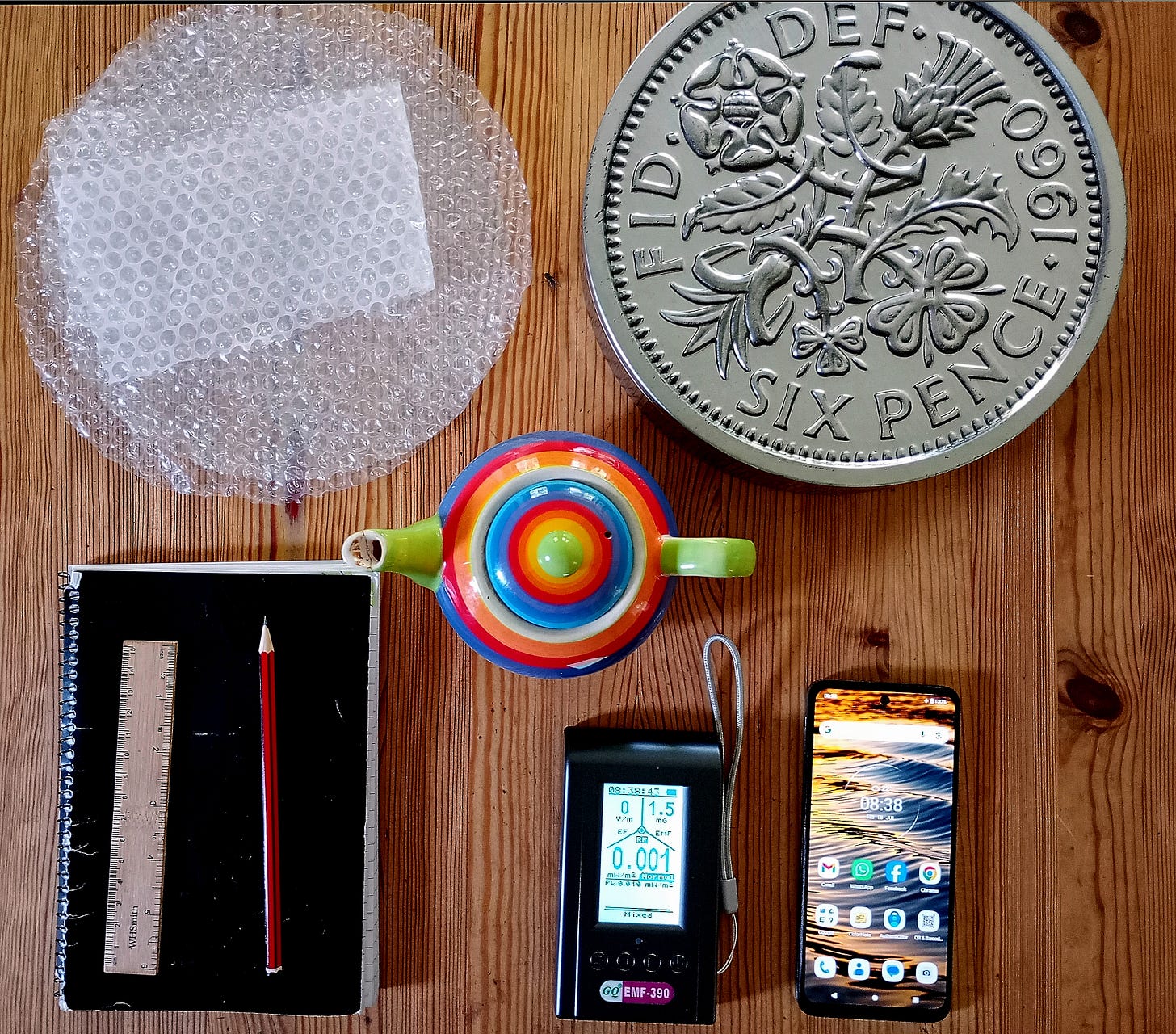
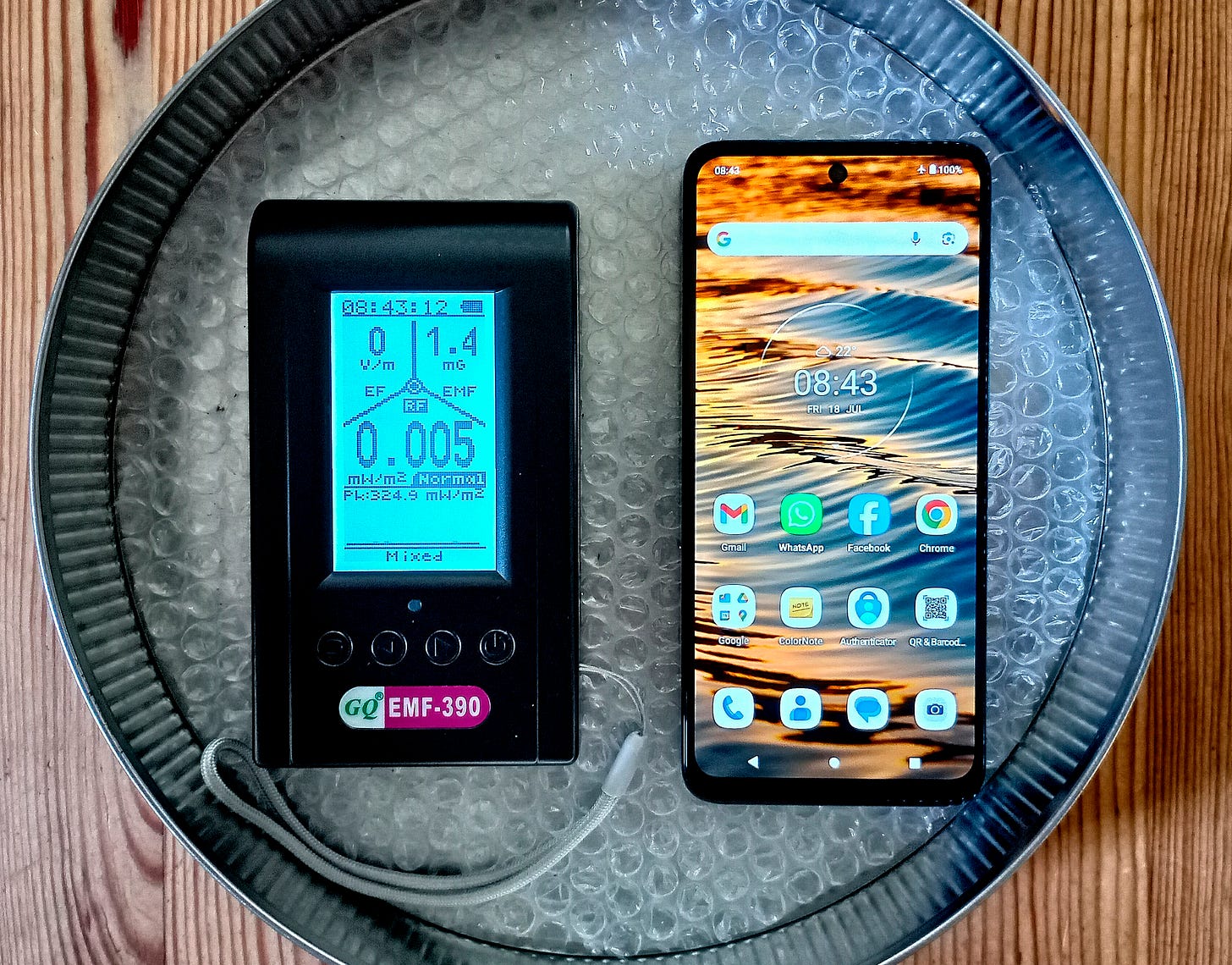
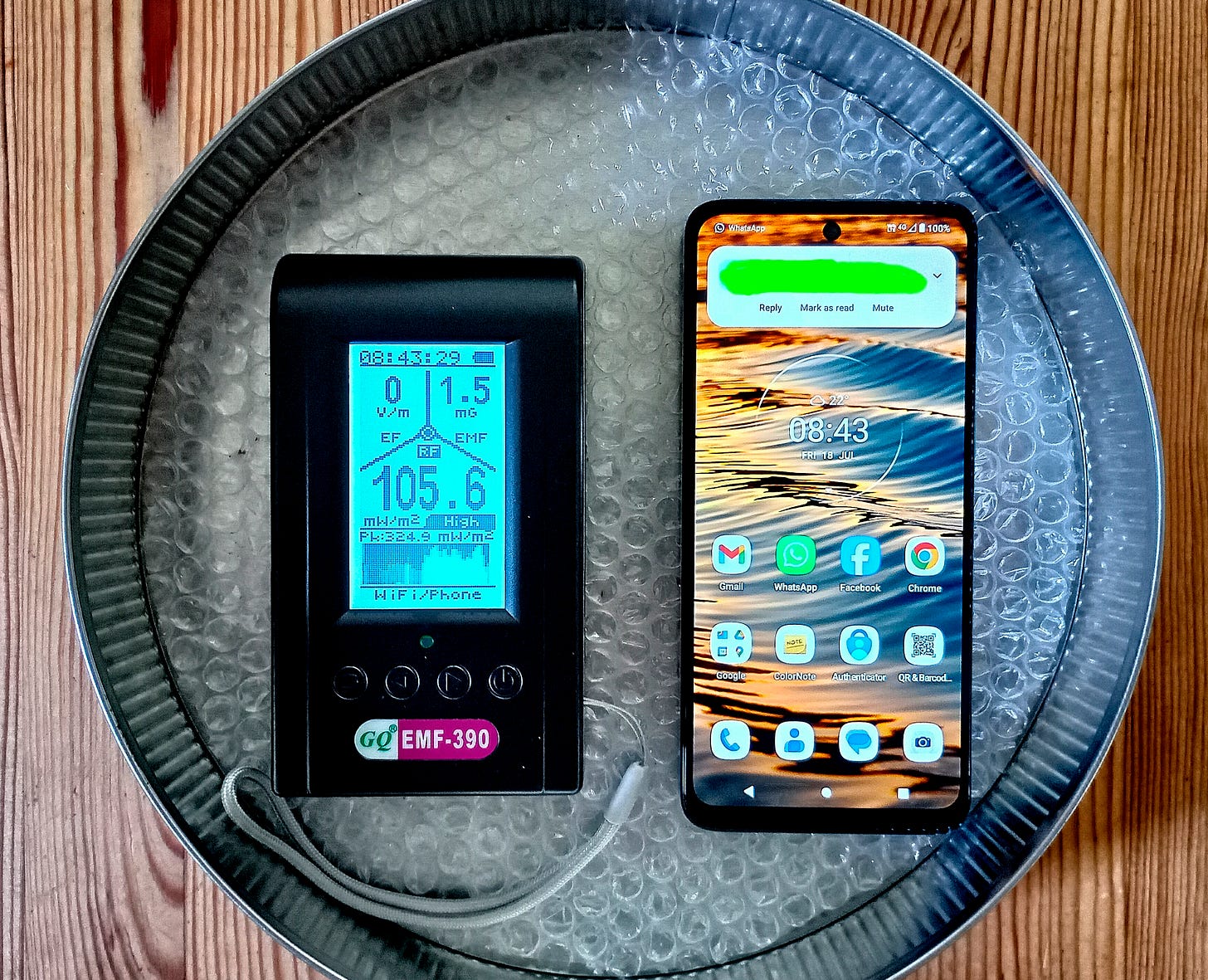
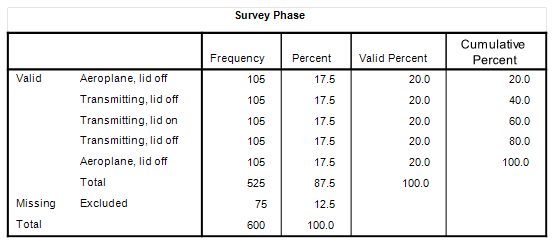
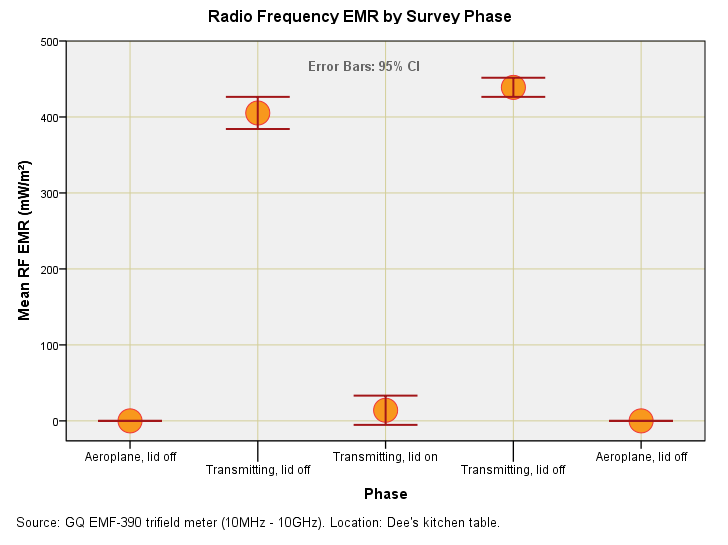
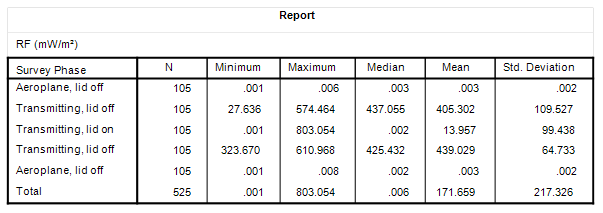
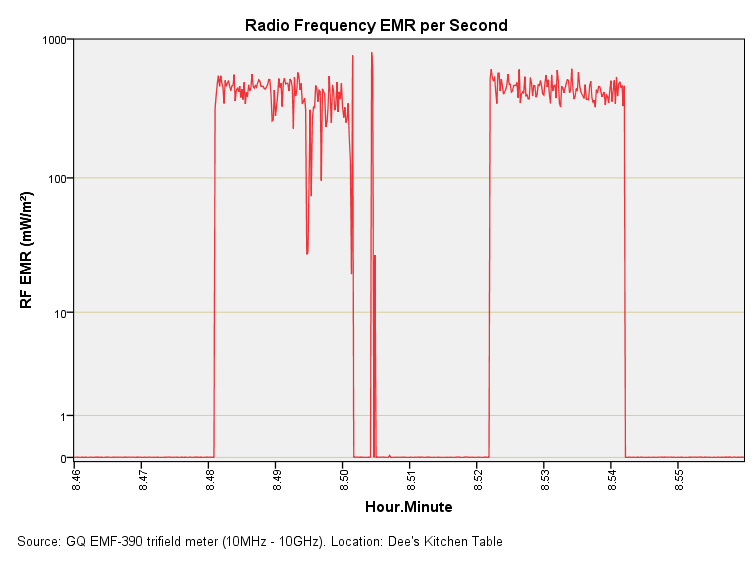
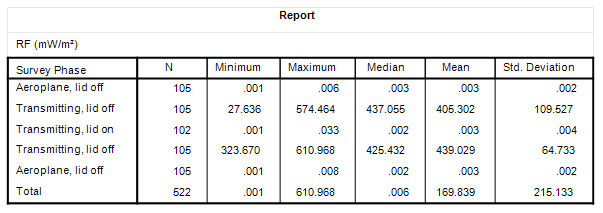
The most important conclusion from your research is that it proves that cookies are essential in scientific experiments. Where would we get our equipment and inspiration without them?
So - why did my iPhone work inside the firms metal lift? And why do phones always seem to work inside aircraft fuselages? Don’t these behave as faraday cages?